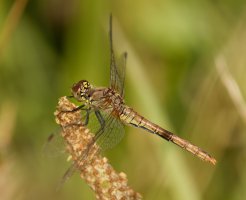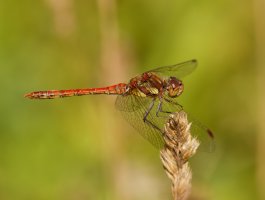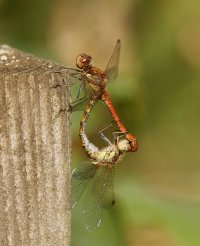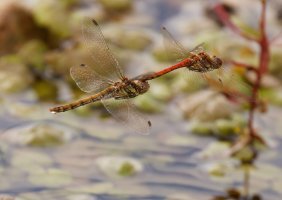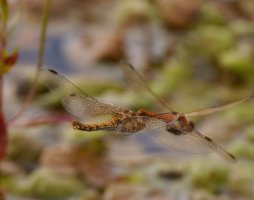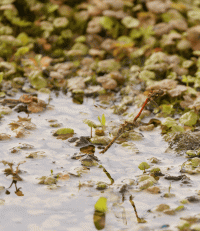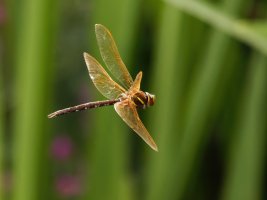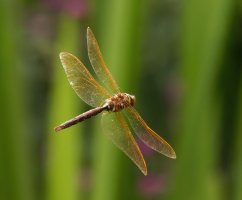You are using an out of date browser. It may not display this or other websites correctly.
You should upgrade or use an alternative browser.
You should upgrade or use an alternative browser.
Dragonflies and Damselflies
- Thread starter AlanF
- Start date
These are surely not the best of my dragonfly pictures but maybe the most important and most difficult to shoot.
This is a golden-ringed dragonfly (cordulegaster boltonii). I've heard and read about these but never thought they would also live around the corner.
An endangered species in Germany (Red list V, IUCN NT*). As is the green-eyed hawker (Red list 3, IUCN VU*). (*If I transfer this right)
And maybe my pics can help to safe its habitat.
A friend of mine told me that he saw a dragonfly in the woods that he thought to be from the genus cordulegaster but he didn‘t know which. He asked me to take pictures to determine it.
So I went into the „dark“ forest and found those patrolling along a small stream.
Bad light, narrow angel of view and those never sitting or hovering.
Until I saw this female (?) resting and took my chance.
With fill flash:
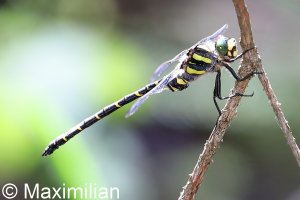
Natural light (1/200, ISO1600):
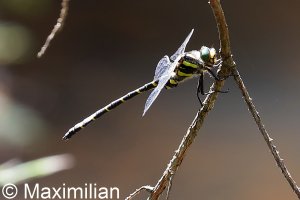
And here the "best" tries on a male in flight (1/500, ISO1600+):
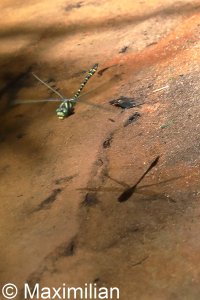
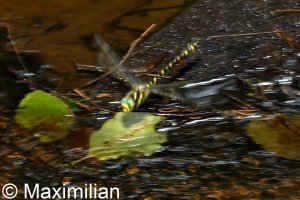
This is a golden-ringed dragonfly (cordulegaster boltonii). I've heard and read about these but never thought they would also live around the corner.
An endangered species in Germany (Red list V, IUCN NT*). As is the green-eyed hawker (Red list 3, IUCN VU*). (*If I transfer this right)
And maybe my pics can help to safe its habitat.
A friend of mine told me that he saw a dragonfly in the woods that he thought to be from the genus cordulegaster but he didn‘t know which. He asked me to take pictures to determine it.
So I went into the „dark“ forest and found those patrolling along a small stream.
Bad light, narrow angel of view and those never sitting or hovering.
Until I saw this female (?) resting and took my chance.
With fill flash:

Natural light (1/200, ISO1600):

And here the "best" tries on a male in flight (1/500, ISO1600+):


Upvote
0
Well done!These are surely not the best of my dragonfly pictures but maybe the most important and most difficult to shoot.
This is a golden-ringed dragonfly (cordulegaster boltonii).
An endangered species in Germany (Red list V, IUCN NT*). As is the green-eyed hawker (Red list 3, IUCN VU*). (*If I transfer this right)
And maybe my pics can help to safe its habitat.
A friend of mine told me that he saw a dragonfly in the woods that he thought to be from the genus cordulegaster but he didn‘t know which. He asked me to take pictures to determine it.
So I went into the „dark“ forest and found those patrolling along a small stream.
Bad light, narrow angel of view and those never sitting or hovering.
Until I saw this female (?) resting and took my chance.
With fill flash:
View attachment 199488
Natural light (1/200, ISO1600):
View attachment 199489
And here the "best" tries on a male in flight (1/500, ISO1600+):
View attachment 199490
View attachment 199491
Upvote
0
Same opinion here!The first picture is really nice. Well done, Maximilian.
I posted the other just to show how much a fill flash can do.
And when you look at the BG you can see the effect that slightly different angel can have.
The "natural light" was the first and in a hurry just to get the determination pic.
For the second one I had some more time to get closer and think of composition and flash etc.
Upvote
0
This is a female brown hawker (aeshna grandis). The males have blue spots and a narrow-waisted abdomen.
I came across her in 2013 in Northern Germany. Totally forgot about this great looking species.
I love the brown veins of the wings.
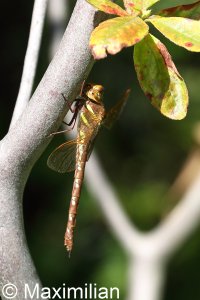
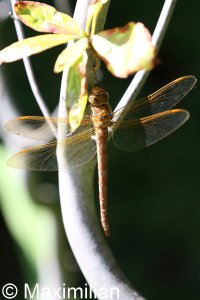
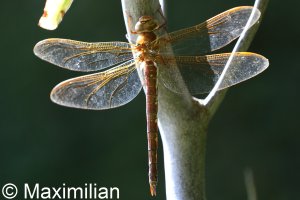
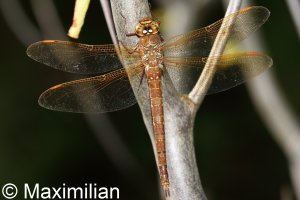
I came across her in 2013 in Northern Germany. Totally forgot about this great looking species.
I love the brown veins of the wings.




Upvote
0
I love all. The last was with fill flash. It was sitting there long enough for me to get inside, fetch the flash and come back again.Very nice series, Maximilian. I really like the first and the last picture.
Upvote
0
So does Mrs Darter, but Mr Darter fancies the first!Very nice pictures. I especially like the second one.
Upvote
0
Wonderful pics, Alan!My first sharp shots of a Brown Hawker this morning.
Upvote
0
A scarce chaser (libellula fulva).
I suppose in the past I posted some pics where I mistakenly thought they were skimmers.
For those looking for differences:
- of course the black spots on the wing tips - but those are not always there
That's where the German Name comes from: Spitzenfleck = tip spot
- The triangle spots at the inner hind wings (skimmers don't have them)
- blue compound eyes (skimmers have greenish)
- sometimes black spots at the third (and fourth) segment of the abdomen
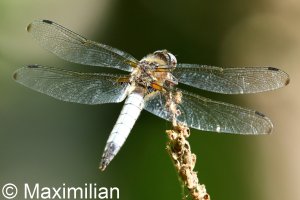
Here is an older one I've posted before as skimmer with almost no black spots on the wing tips but therefore the black and blue abdomen
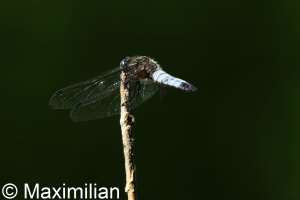
I suppose in the past I posted some pics where I mistakenly thought they were skimmers.
For those looking for differences:
- of course the black spots on the wing tips - but those are not always there
That's where the German Name comes from: Spitzenfleck = tip spot
- The triangle spots at the inner hind wings (skimmers don't have them)
- blue compound eyes (skimmers have greenish)
- sometimes black spots at the third (and fourth) segment of the abdomen

Here is an older one I've posted before as skimmer with almost no black spots on the wing tips but therefore the black and blue abdomen

Upvote
0
WOW Great shots! Well done, Sir!
Thanks Click and Maximilian. They were very difficult shots. He was darting very fast without any hovering against a background. I don't know how the R5 focussed on him as I was panning like mad just trying to get him in the frame.Wonderful pics, Alan!
Upvote
0
Okay, you got me. I'll start saving for one *sigh*... I don't know how the R5 focussed on him as I was panning like mad just trying to get him in the frame.
Upvote
0
Similar threads
L
- Replies
- 12
- Views
- 3K
L
- Replies
- 23
- Views
- 11K
- Replies
- 2
- Views
- 8K

